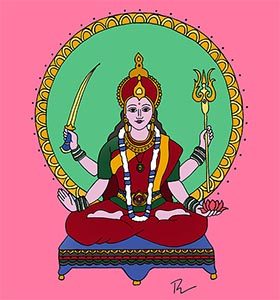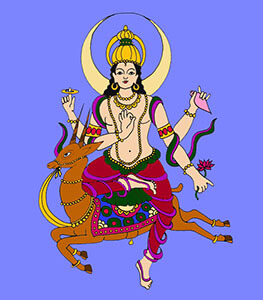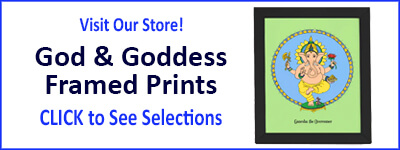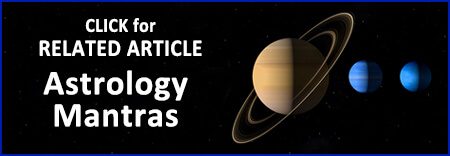
Param Jyoti Mantra for Supreme Light
The lyrics for the Param Jyoti Mantra are “Om Hrim Hamsa Soham Svaha.” Param Jyoti means supreme light: the best or highest (para or param) form of light (jyoti). This mantra brings the highest light into every aspect of life including the mind, body, breath and actions. The translation and meaning of each word in the Param Jyoti Mantra is covered in detail below.
Origin of the Param Jyoti Mantra
The Param Jyoti mantra is part of the Vedic, Vedantic and Tantric traditions. A Vedic mantra comes from the Shankaracharya tradition. Vedic mantras are focused on sound quality and the impact of specific sounds. Vedic mantras are part of the path of scriptural recitation.
Vedantic Mantras
Vedantic mantras emphasize the Upanishads and the interpretation of these texts. There are many branches within the Vedantic tradition. Vedanta schools often emphasize devotion (Bhakti) and are connected to Vaishnavism and oriented towards Vishnu.
Tantric Mantras
Mantras are also a central feature of Tantric traditions. Tantric mantras are very specific for particular issues that may need resolution. The word “tantra” means “woven together.” Tantric mantras are often passed from a guru to a disciple.
Share this page with a friend!
Watch nearly 400 videos on the Vocal Medicine Channel!
Translation of the Param Jyoti Mantra
Om: hum of the universe, seed syllable of all sounds
Hrim: a fire syllable that combines breath (ha) with fire (r) and focus (eem)
Hamsa: the sound of inhalation and exhalation
Soham: also a mnemonic device for the breath
Svaha: a fire offering or sacrifice
Other spellings for the Param Jyoti Mantra include “Om Hreem Hamsa So Ham Swaha” and “Om Hrim Hamsa So’ham Svaha.”
Powerful Bija (Beej) Syllables
The Param Jyoti Mantra mantra includes the bija or beej seed syllables OM and HRIM. The Sanskrit word OM is familiar to most people as the quintessential mantra. OM is the fundamental mantra connecting us to higher reality and the highest aspect of our own beings. OM is believed to be the sound of the whole cosmic manifestation of God.
Learn more about bija or beej syllables in the related article on One Word Mantras.
Click to explore Healing Mantras.
OM and the Universal Hum
OM is the sound of the universe, the sound from which all other sounds are formed. OM represents past, present and future. OM is a seed or building block of creation. OM is the mantra of assent, much like saying “amen” at the end of a prayer. OM affirms the intention of the mantra. OM is the sound of the highest Brahman.
Four Parts of AUM
OM can be viewed as having four parts: A-U-M followed by the sound of silence. The A (ahhh) represents the beginning, the connection to the physical world. The U (oooh) signifies the maintaining of the physical universe. The M (mmmm) is the transformative energy of the universe and the realm of thoughts and feelings. As noted, the fourth sound is the silence that follows the AUM. This is pure consciousness and knowingness.
OM and the Hindu Trinity
OM represents both the manifest and unmanifest. In the form of AUM, this seed syllable is similar to the trinity of God in many other traditions. In that sense, the A represents Brahma or the Father; the U represents Vishnu, the Son or the preserver; and the M represents dissolution, the Holy Spirit or Shiva. OM is commonly associated solely with the latter (Shiva) as the cosmic masculine force.
OM for Clearing the Mind
OM is often included at the beginning of a mantra or chant to clear the mind for meditation. OM is said to draw the energy from the bottom of the spine to the top of the head. The energy of OM is one of expansion and ascension.
Om for Healing Negativity
In terms of healing, OM brings prana into the subconscious mind. OM is the sound of the sun and sheds light on addictive tendencies and negative emotions, bringing them to light for healing and transmutation. One of the simplest OM mantras is “OM, Shanti, Shanti, Shanti” meaning “OM, Peace, Peace, Peace.”

HRIM in the Param Jyoti Mantra
The second word in the Param Jyoti Mantra is HRIM. HRIM is a combination of “ha” for prana and “ra” for fire and light with “ee” for focus and motivation. The sound HRIM may help us to connect with the deity of our choice at the level of the heart. This aids in allowing divine power to enter into our hearts. This bija mantra specifically relates to Parvati, the consort of Shiva, and is a feminine bija syllable. HRIM allows for both deep feeling and thought.
Activating the Heart
HRIM (hreem) is the beej syllable for the heart at many levels: the spiritual heart, the emotional heart and the physical heart. The Param Jyoti Mantra aids in longevity by energizing the heart. Due to the healing and stimulating influence on the heart, HRIM is also said to promote circulation and positively affects the lungs and nervous system.
One Word Mantra for the Sun
In Vedic astrology, HRIM relates to the sun, which is the planet of the heart. The solar energy and fire of the sun brings the outward expression of attraction and charisma. However, the solar energy of HRIM is gentle, similar to a sunrise. HRIM increases the finer energy of the heart. Conversely, HRIM can also be used harshly or negatively to mesmerize another person.
Param Jyoti Mantra and Astrology
The use of mantras is a significant part of Vedic astrology. Each planet mantra is said to work in the subtle or unseen realms that influence our lives in every area. Astrology mantras mitigate challenging aspects and amplify positive astrological configurations.
There are specific times when the Param Jyoti Mantra is purported to be the most effective: solstices; equinoxes; eclipses; new and full moons; and sunrise, noon, and sunset. For more on this topic, please see the Astrological Mantras article.
HAMSA for the Lungs and Breath
Mantras for the lungs often focus on the breath, creating a smooth inhale and exhale to strengthen the lungs and calm the mind. The word HAMSA creates a vibration that connects to your lungs, heart and spirit. The syllable HAM is the sound of the inbreath or air going into the lungs. The syllable SA is the sound of the outbreath or exhalation.
Other Meanings of HAMSA
“Hamsa” or “hansa” is also a term of honor, literally meaning “swan.” For example, the name “paramahansa” means the “highest swan.” For example, this is a name given to Paramahansa Yoganada, author of the famous book Autobiography of a Yogi.

SOHAM for Vitality and Rejuvenation
SOHAM or So’ham means “I AM HE.” This is a further reference to the Supreme Being. Like HAMSA, the word SOHAM is also related to the breath. In different systems, the syllables are for the inbreath and outbreath or vice versa. Astrologically speaking, SOHAM is related to the moon whereas HAMSA is related to the sun.
SOHAM and Moon Astrology
The moon is associated with mystery and the hidden side of life. The moon is often viewed as the force that establishes a rhythm due to its changing phases. There are numerous moon deities in various world traditions. The moon has sometimes been viewed as masculine though more often it has feminine associations. Moon goddesses may represent only one phase of the moon. Each phase can be viewed as a new cycle of life. The full moon reflects completion, maturity or pregnancy.
Svaha in the Param Jyoti Mantra
According to Indian mythology, the Hindu god of fire (Lord Agni) married a goddess named Svaha. “Svaha” is a word often used at the end of mantras, especially those invoked during fire ceremonies. Svaha is a feminine noun meaning sacrifice, offering or oblation.
Svaha as the Goddess of Fire
Svaha also means an auspicious ending. Svaha derives from Sanskrit root words meaning “to call the good.” In Tibetan, the word is often translated and pronounced as “soha.” Svaha represents a shakti (feminine) power that cannot be burned by sacred fire.
Author Kathleen Karlsen
Kathleen Karlsen is a musician, artist, writer and speaker. She is the author of two books (Flower Symbols and Vocal Medicine) and over 200 articles. Kathleen, her husband Andrew, and their five children live in Bozeman, Montana. More about Kathleen Karlsen.
PARAM JYOTI MANTRA ARTICLE SUMMARY
This article covers the origin and uses of the Param Jyoti Mantra for supreme light. This is an ancient mantra designed to active the heart as well as the soul and breath. This article includes a video of this mantra and the specific meaning and impact of each word in the Param Jyoti Mantra: Om Hrim Hamsa Soham Svaha.







